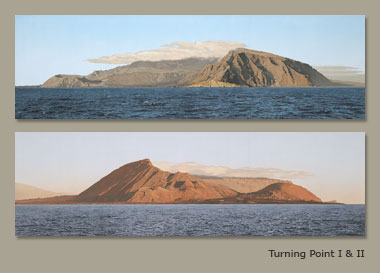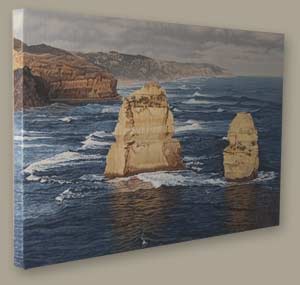
PrefaceMy subject of majestic vistas and portrayal of changing light echo the themes of the Luminist painters of the nineteenth century. But my work draws inspiration from other sources as well. I combine classical and contemporary. I incorporate my experience with exotic places and ancient cultures and explore concerns of perspective, scale and the passage of time. I have long been influenced by Eastern Art and Philosophy. My extended horizontal formats and sequential series of canvases are inspired by the Chinese hand scroll and Japanese screen upon which a story unfolds. But Eastern thought came alive for me in the American West. The I Ching [Chinese Book of Changes], which I had studied for years, draws wisdom from archetypal situations in Nature. By immersing myself in the wilderness, I was surrounded by the very phenomena upon which the ancient text is based: Thunder comes from the Earth, A Lake at the foot of the Mountain, Wind on the Water and so on. I began to paint these ‘changes’. Thirteen summers spent with a Lakota family, camping on their land in the hills of South Dakota instilled in me an intimate connection to and deep respect for the Elements-physical and metaphysical. I came to know the spirit of the thunder, grass, wind. This led to extensive exploration of wild American territories from New Mexico to Alaska. I continue today to seek out the world's wild places from Equator to Arctic, to intuit the mysteries of Nature, and to preserve these sights and insights on canvas. ProcessMy paintings begin with personal exploration of the wild landscapes that inspire me: often camping, sometimes on the road or at sea, frequently re-visiting places I feel to have particular power or beauty. |
|
 |
|
Up at dawn to witness the rising sun or setting moon or braving the elements to participate in the approach then subsidence of a thunderstorm, I stay in the moment, capturing split-seconds of changing light and shifting shadow with my camera or "electronic notebook". Returning to the studio, I revisit the experiences I've preserved in photographic form and begin to bring my "visual adventures" back to life. |
 |
First, a composition must be designed to best portray a chosen "event". I have found that the horizontal panorama is most effective for unfolding a vista such as "Grand Teton Sunrise": a narrative of first light crowning the summits of a vast mountain range. Or, a pair [or series] of related canvases might be appropriate to present one subject in "different lights". The diptych panels of "Turning Point" depict two dramatically contrasting views of the same Galapagos island being rounded while the sun began to set. Composition decided, sketches perfected and linen prepared, the painstaking process of painting commences. I interplay the effects of oil and acrylic paints to achieve the finest atmospheric radiance as well as the power of light and shadow. Myriad glazes of transparent color become sky and mist. Thousands of calligraphic brushstrokes infuse movement into bodies of water. Weeks, sometimes months of meticulous attention to detail animate the painted scene with its original essence, the spirit of time and place. Through this creative journey, I transform fleeting moments, shimmering instants and disappearing wilderness into timeless painted meditations. |
|
Although my paintings echo the tradition of the Luminists of the 19th century, these are contemporary works of art and are designed to be presented unframed. I paint the image around the edges of the canvas allowing the vistas to continue to expand without the visual confinement and distraction of a frame. |
 |